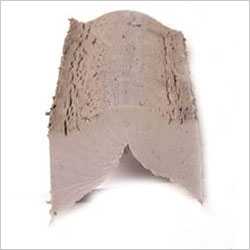Smaller and Lower Movement
Wider and/or Higher movement Joints
Smaller Expansion / Movement Joints - smaller and /or lower movement expansion joints are generally covered by well-established, national and international design and performance standards, as are their typical sealing solutions that are generally extruded joint sealants, ‘mastics’ etc.
At Emseal we are not generally involved in solutions for small building movement joints / expansion joints that are typically designed at up to around 25 to 30mm wide and with a maximum requirement of around 25% joint width as the joint movement capability.
Smaller movement joints are used wherever the designer needs to accommodate thermal movement and/or to allow for the differential expansion rates and levels of movement of different building materials during normal cycles of thermal movement i.e. between night and day, Summer and Winter etc. These smaller ~25mm wide, ~25% joint movement capability movement joints have been and are used throughout almost every type of building and civil engineering structure, worldwide. They follow very established design standards and all necessary local and regional Building Regulations, plus they are easily and effectively sealed to make them watertight. Predominantly they are sealed with extruded joint sealants, or sometimes less frequently with preformed profiles and multi-functional connectors or gaskets etc. These materials and systems are also all produced and applied in accordance with well-established and largely similar national and international standards of which there are many for the design and dimensioning of movement joints in different building materials. These standards also provide guidance to help users calculate the necessary joint movement requirements and best locations for these joints in and between different building materials. The best-known standards in the UK still seem to include extracts from the old BS 6093:1993/ 2006 Design of joints and jointing in building construction (+A1 update added 2013), together with all the relevant later Eurocodes and addendums.
In North America, guidance very similar to this is also given in ASTM Guides, including C1193 and C1472, plus in the older ‘Expansion Joints in Buildings’, Technical Report No. 65 (1974), which is also still very commonly referred to because of established understanding.
Extruded Joint Sealants or ‘mastics’ - The extruded joint sealants for construction, isolation and smaller movement joints are sometimes referred to as ‘mastic’ sealants, although there has never been a ‘mastic’ sealant as such. Traditionally these mastic sealants developed over many years in both the UK and the USA, were predominately linseed or other plant oil and/or bitumen-based, flexible, although not elastic, sealing compounds or putties as they were also sometimes better known. The first polymer sealants were butyl rubber polymers initially, followed by the first acrylic joint sealants that were produced in the mid-20th Century, which were gradually replaced for externally exposed and greater movement (elastic) capability, with more modern polymer technologies. Nowadays these smaller movement joints are generally sealed with modified silicone, polyurethane or so-called hybrid resin technologies that could be described as a bit of both. However, these sealants all reach their limits of performance at around 25 to 30mm wide, and at a maximum joint movement capability of around 25% of the joint width. It is also important to note that at these upper levels of their application limitations, extruded joint sealant application and installation can still be very difficult and requires the ideal environmental conditions and skilled labour for success.

Totally Inadequate Extruded Sealant Thickness - Far Too Thin

Inadequate Sealant Application - Wrong Dimensions - Too Thin
Wider and / or High Movement Expansion Joints - Suitable joint sealing systems for these joints are generally not covered by any established design or performance standards, excepting some for very specialised structures and types of joints – e.g. Bridge deck expansion joints to UK Highways Agency C357 etc.
The larger and more complex a building or civil engineering structure, the larger (generally means wider than 30mm) and more movement (generally means that more than 25%) is required.
With the increasing size of structures, the more complex that the necessary movement joints can become in terms of their function, design, installation and their performance in service requirements can be. There are also different types of movement to be taken into consideration on different types of structures and joint demands, which the wider and / or higher movement capability expansion joints must also be designed and installed to accommodate. These additional different types of movement that must be accommodated are outlined and discussed in the following pages of this website.
